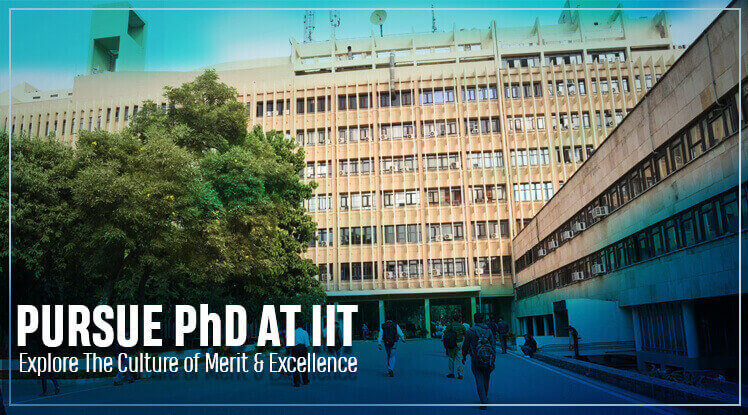Halting The Growth Of Harmful Bacteria Through Specially-Designed Sugars

Researchers have used modified sugars to hamper the development of cell wall in disease- causing bacteria – Photo by Volodymyr Hryshchenko
Since the discovery of penicillin in 1928, antibiotics have been used to subdue bacterial infections. However, the rampant use of antibiotics has made some species of bacteria immune to their effects. Novel antibiotic strategies are needed to fight the increasing number of antibiotic- resistant bacteria. In a recent study, researchers from the Indian Institute of Technology Bombay (IIT Bombay) and Bowdoin College, Maine, USA, present a new method to target disease- causing bacteria by introducing chemically modified sugars to hamper their growth.
The study was published in the journal Chemical Science. It was funded by the National Institutes of Health, USA, the James Stacy Coles Fellowship, and the Science and Engineering Research Board, University Grants Commission (UGC) and the Department of Biotechnology, Government of India.
The cell wall of bacteria is a meshwork of simple forms of sugars called monosaccharides and proteins called amino acids. Different species of bacteria in our body incorporate different types of sugars while creating the cell wall, some which are rare in human cells. The cell wall protects
the bacterium from harm and, in some cases, also helps in infecting a host cell. In fact, many antibiotics target the cell wall synthesis machinery to arrest a bacterial infection. However, these antibiotics impact both disease-causing and beneficial bacteria.
“There is an urgent need for new antibiotics, and the carbohydrates that coat the surface of bacterial cells are intriguing targets due to their distinctive structures and links to disease development,” says Prof Danielle Dube from Bowdoin College, one of the authors of the study. For example, these surface carbohydrates may help the infecting bacterium to attach to the host cell as seen in the case of Streptococcus parasanguinis and Neisseria meningitidis.
In the current study, the researchers have developed antibiotics that are tailor-made to attack only the disease-causing bacteria. They worked with three rare sugars used by Helicobacter pylori, a bacterial species that infects the stomach lining, and Campylobacter jejuni, another species of bacteria that causes severe diarrhoea. They altered the rare sugars by adding benzyl and fluoro groups to their chemical structures. “The Kulkarni laboratory had already developed syntheses of these rare sugars, which offered a tractable starting point,” says Prof Dube, about their choice of sugars.
“While the synthesis of the benzyl sugar was straightforward and could be achieved from our established method, synthesis of fluoro sugars was challenging and warranted a novel route for their synthesis,” says Prof Suvarn Kulkarni from IIT Bombay, one of researchers involved in the study. In a sugar molecule, hydrogen and oxygen atoms attach to carbon atoms in the form of a hydroxyl group, and to attach a fluoro group a hydroxyl group has to be replaced. However, this addition is not an easy task. Sequential chemical reactions developed by the researchers targeting different carbon atoms within one monosaccharide allowed them to place the fluoro group at the right position. “Reactions with fluorinating agents often lead to drastic changes in the structure of sugars rendering them non-functional. Our method provided access to this class of fluorinated rare sugars for the first time,” he elaborates.
The bacteria use up the modified sugars as regular nutrients. The benzyl sugars cause the bacteria to create shorter chains of simple sugars for their cell walls. As a result, the wall thickness reduces and disrupts the secure bacterial covering. Fluoro-sugars, on the other hand, lack the hydroxyl group that reacts with the other monosaccharides to form the sugar chains present in the cell wall. Hence, the fluoro-sugars accumulate inside the bacterium without contributing to cell wall formation.
The researchers also added an azide group, a molecule containing three nitrogen atoms, to the sugars, to help in visualizing the changes produced by the rare sugars. The azide group has a propensity to react with another chemical group called phosphine. Taking advantage of this reaction, they created a chemical probe containing the phosphine group and a short chain of
Apply for a PhD at IITs
Apply for a PhD at IITs — the best technology institutions of India
amino acids called peptide which can be detected using antibodies. When the probe is put into a group of bacteria, it reacts with the azide groups in the bacterial cell wall and tags the peptide to the wall. The researchers can add antibodies to visualize the effect of the altered sugars on the bacterial cell wall and measure the increase or decrease in the tagged peptide.
“A strength of our approach is that very little prior information is required,” Prof Dube points out. “In essence, if you know that your bacterium of interest incorporated rare sugars that you can detect, then you can use this test to screen the effect of the modified sugars.” In this study, the researchers knew through their previous work that the bacteria picked up the azide groups which they could detect.
When tested on Helicobacter pylori, the researchers found that the altered rare sugars caused a reduction in the synthesis of cell wall components. Fewer bacteria survived, and they showed slower growth and movement. The bacteria could not form biofilms, a protective surface secreted by a group of infecting bacteria to create a safe environment within the host body.
Interestingly, the modified sugars did not affect the survival and movement of Campylobacter jejuni. Same was true for another non-disease-causing bacteria typically found in the gut, Bacteroides fragilis, which showed no adverse reaction to these sugars. In this way, using combinations of different bacteria and sugars, the researchers concluded that both the bacterial strain and the sugar specific to that strain determines whether the cell wall synthesis will be successfully disrupted.
“Our synthetic methodologies have provided unprecedented access to a variety of rare sugars which can be explored for the discovery of various diagnostics and therapeutics,” says Prof Kulkarni. The study opens up new avenues for research on the precise molecular mechanisms that affect cell wall biosynthesis and how changes to the chemical structure of the rare sugars can impact their function. “These sugars may be used to sensitize bacteria against existing antibiotics or make them susceptible to immune attack. We look forward to seeing where this work leads!” Prof Dube signs off.
| Authors of the research paper | Daniel A. Williams, Bowdoin CollegeKabita Pradhan, Indian Institute of Technology Bombay Ankita Paul, Indian Institute of Technology Bombay Ilana R. Olin, Bowdoin CollegeOwen T. Tuck, Bowdoin College Karen D. Moulton, Bowdoin CollegeSuvarn S. Kulkarni, Indian Institute of Technology Bombay Danielle H. Dube, Bowdoin College |
| Contact email | Danielle H. Dube E-mail: [email protected] Department of Chemistry & Biochemistry, Bowdoin College, 6600 College Station, Brunswick, ME, USA Suvarn S. Kulkarni E-mail: [email protected] Department of Chemistry, Indian Institute of Technology Bombay, Powai, Mumbai, India |
| Title of research | Metabolic inhibitors of bacterial glycan biosynthesis |
| Bibliographic Info | Metabolic inhibitors of bacterial glycan biosynthesisDaniel A. Williams, Kabita Pradhan, Ankita Paul, Ilana R. Olin, Owen T. Tuck, Karen D. Moulton, Suvarn S. Kulkarni and Danielle H. Dube, Chem. Sci., 2020,11, 1761-1774 DOI:/10.1039/C9SC05955E |
| DOI | https://doi.org/10.1039/C9SC05955E |
| Funding Information | The research reported in this publication was supported by the National Institutes of Health under grant number R15GM109397 toD. H. D., an Institutional Development Award (IDeA) from the National Institute of General Medical Sciences of the National Institutes of Health under grant number P20GM103423, and by awards to D. A. W. from the James Stacy Coles Fellowship. S. S. K. thanks the Science and Engineering Research Board (grant No. CRG/2019/000025), the ISF-University Grants Commission (UGC) joint research program framework (grant No. 2253) and Department of Biotechnology (BT/INF/22/SP23026/2017) |
| Article written by | Utkarsha A. Singh |
| Image credits | Photo by Volodymyr Hryshchenko |
| Gubbi Page link |
Apply for a PhD at IITs
Apply for a PhD at IITs — the best technology institutions of India







